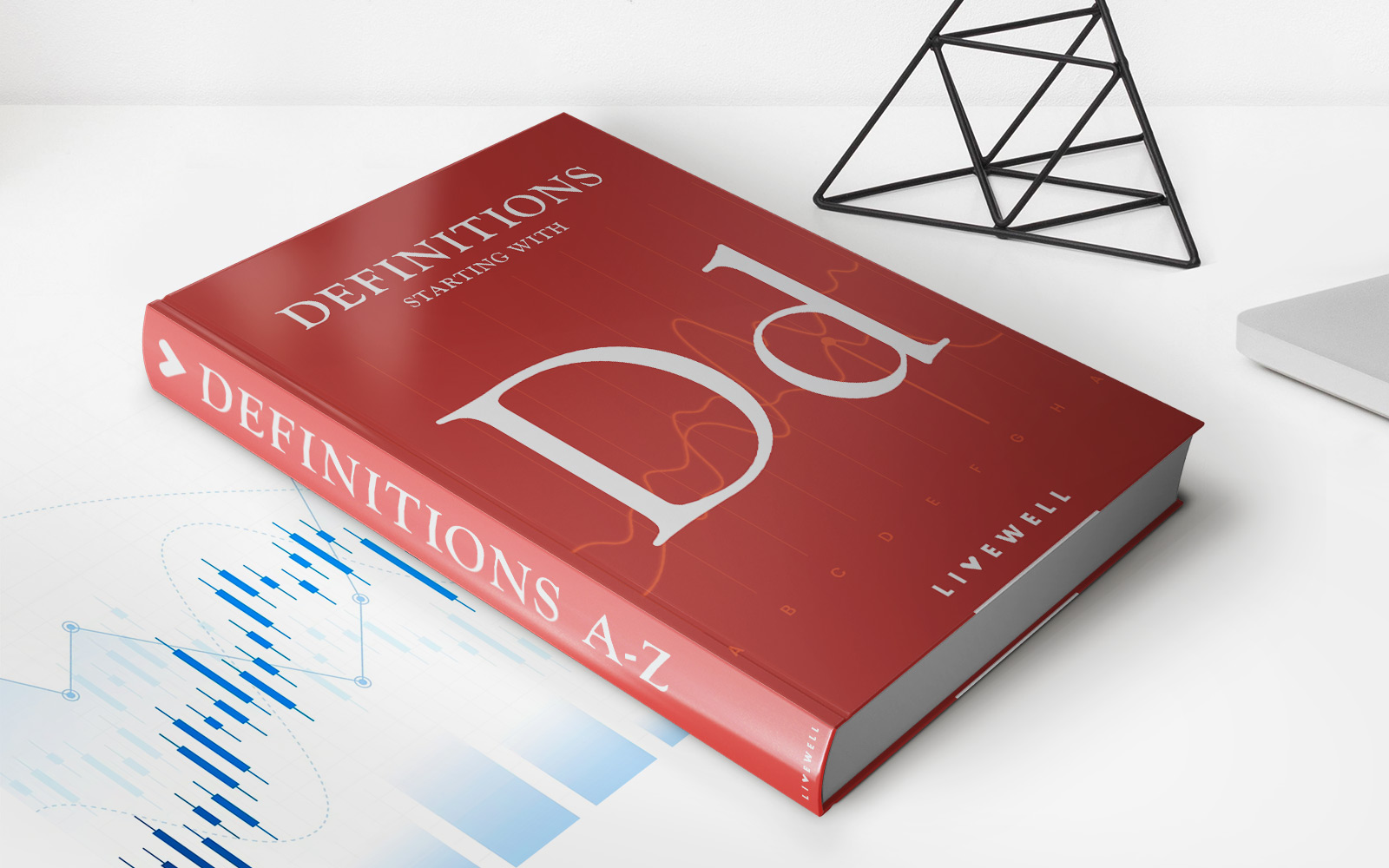

Finance
How To Optimize Capital Structure
Modified: February 21, 2024
Learn how to optimize your capital structure and make informed financial decisions with our comprehensive guide on finance.
(Many of the links in this article redirect to a specific reviewed product. Your purchase of these products through affiliate links helps to generate commission for LiveWell, at no extra cost. Learn more)
Table of Contents
- Introduction
- Understanding Capital Structure
- Importance of Optimizing Capital Structure
- Factors to Consider when Optimizing Capital Structure
- Debt to Equity Ratio
- Weighted Average Cost of Capital (WACC)
- Interest Coverage Ratio
- Evaluating the Optimal Capital Structure
- Strategies for Optimizing Capital Structure
- Case Studies on Optimizing Capital Structure
- Conclusion
Introduction
Welcome to our comprehensive guide on optimizing capital structure! In the world of finance, finding the optimal mix of debt and equity in a company’s financial structure is crucial for long-term sustainability and growth. Capital structure refers to the way a company finances its assets and operations through a combination of debt and equity.
Optimizing capital structure involves determining the right balance between debt and equity that ensures the company can maximize its profitability, minimize its cost of capital, and mitigate financial risks. It is a strategic decision that has a significant impact on a company’s ability to raise funds, invest in growth opportunities, and generate value for its shareholders.
In this guide, we will delve into the intricacies of capital structure optimization and provide you with the knowledge and insights necessary to make informed decisions. We will explore the factors that should be considered, the key ratios that can help evaluate the optimal capital structure, and the strategies that can be employed to achieve it.
Whether you are an entrepreneur seeking to start a new business, a financial analyst looking to evaluate investment opportunities, or a manager looking to improve your company’s financial position, understanding how to optimize capital structure is a critical skill that can drive success.
Throughout this guide, we will provide real-world examples and case studies to illustrate the concepts and demonstrate how companies have successfully optimized their capital structure to achieve their financial goals. We will also discuss some pitfalls to avoid and challenges to overcome in the process.
It is important to note that capital structure optimization is not a one-size-fits-all approach. Each company’s situation is unique, and various factors, such as industry dynamics, business lifecycle stage, and market conditions, need to be taken into account. Therefore, careful analysis and thoughtful decision-making are essential.
So, whether you are a finance professional or simply curious about the world of capital structure optimization, join us as we embark on this journey to uncover the key insights and strategies for optimizing capital structure and paving the way for financial success.
Understanding Capital Structure
Before delving into the intricacies of capital structure optimization, it is important to have a solid understanding of what capital structure entails. In its simplest form, capital structure refers to the combination of debt and equity that a company uses to finance its operations and assets.
Debt refers to borrowed funds that must be repaid over time, typically with interest. This can include bank loans, bonds, or other forms of financial obligations. Equity, on the other hand, represents ownership in the company and is often obtained through issuing shares of stock.
A company’s capital structure determines how it raises money to fund its operations, expand its business, and invest in new opportunities. It also affects the company’s financial risk, cost of capital, and ability to attract investors.
There are several components that make up a company’s capital structure:
- Long-term Debt: This includes loans, bonds, and other forms of debt that have a maturity period of more than one year. Long-term debt typically comes with fixed interest rates and specific repayment schedules.
- Short-term Debt: Short-term debt refers to obligations that are due within one year, such as lines of credit or short-term loans. These types of debt are often used to finance day-to-day operations or cover temporary cash flow needs.
- Equity: Equity represents ownership in the company and is obtained through the issuance of shares of stock. Equity holders have a claim on the company’s assets and earnings, and their ownership stakes determine the voting rights and dividends they receive.
- Retained Earnings: Retained earnings are profits that a company has earned and chosen to reinvest in the business rather than distribute to shareholders as dividends. They contribute to the company’s equity and can be used to finance future projects or reduce the need for external financing.
- Preferred Stock: Preferred stock is a type of equity that combines characteristics of both debt and common equity. Preferred stockholders have a higher claim on assets and earnings than common stockholders but typically do not have voting rights.
Each component of the capital structure has its own advantages and disadvantages. Debt financing provides access to funds that do not dilute ownership, but it comes with the obligation to repay principal and interest. Equity financing, on the other hand, does not require repayment but dilutes ownership and can result in lower earnings per share.
Understanding the intricacies of a company’s capital structure is essential for decision-making and financial management. It allows companies to evaluate their financial risk, cost of capital, and ability to weather economic downturns. By analyzing the composition of their capital structure, companies can make informed decisions on how to optimize it to achieve their long-term financial goals.
Importance of Optimizing Capital Structure
Optimizing the capital structure is of paramount importance for any company. It plays a crucial role in determining the financial health, stability, and growth prospects of the business. Here are some key reasons why capital structure optimization is vital:
- Maximizing Profitability: By striking the right balance between debt and equity, companies can optimize their capital structure to maximize profitability. This is achieved by minimizing the cost of capital and leveraging financial leverage to generate higher returns on investment. A well-optimized capital structure allows companies to increase earnings and enhance shareholder value.
- Minimizing Cost of Capital: The cost of capital is the blended rate of return required by investors to provide financing to the company. By optimizing the capital structure, companies can lower their overall cost of capital. Debt financing, for instance, often comes with lower interest rates compared to equity financing. Therefore, incorporating an appropriate amount of debt in the capital structure can help minimize the cost of capital and increase financial efficiency.
- Reducing Financial Risk: A balanced capital structure can help mitigate financial risks and improve the company’s resilience to economic downturns or unexpected challenges. Having a mix of debt and equity allows companies to diversify their sources of funding and avoid excessive reliance on a single type of financing. This diversification helps spread the risk and protects the company from potential financial distress.
- Flexibility and Liquidity: Optimizing the capital structure provides companies with greater flexibility and liquidity. A well-structured capital base allows companies to access different financing options and adapt to changing market conditions. It provides a foundation for future growth, expansion, and investment in new opportunities. Additionally, maintaining an optimal level of liquidity ensures that the company has enough resources to meet short-term obligations and capitalize on strategic initiatives.
- Attracting Investors: A well-optimized capital structure can be an attractive proposition for potential investors. Investors often analyze a company’s capital structure to assess its financial strength, risk profile, and growth potential. A balanced capital structure that demonstrates effective management of debt and equity can instill confidence in investors and increase the company’s ability to attract capital at favorable terms.
By understanding the importance of optimizing capital structure and implementing effective strategies, companies can position themselves for long-term success and sustainability. However, it is crucial to note that capital structure optimization is not a one-time event, but an ongoing process that should be regularly reviewed and adjusted based on changing market conditions and business objectives.
Factors to Consider when Optimizing Capital Structure
Optimizing the capital structure of a company requires careful consideration of various factors to ensure the most effective and sustainable financial structure. Here are some key factors that should be taken into account:
- Business Risk: The level of business risk associated with a company’s operations is a crucial factor when determining the optimal capital structure. Industries with higher business risk, such as technology startups or companies in volatile markets, may opt for a lower proportion of debt to reduce the financial burden in times of uncertainty. On the other hand, companies in stable industries with consistent cash flows may be more inclined to utilize higher levels of debt.
- Financial Risk Tolerance: Every company has its own risk tolerance level based on its financial strength, stability, and growth prospects. Assessing the company’s risk tolerance is essential in determining the appropriate mix of debt and equity. Conservative companies may prefer a lower debt-to-equity ratio to reduce the risk of default and financial distress, while more aggressive companies may be comfortable taking on higher levels of debt to achieve greater leverage and potential returns.
- Market Conditions: The current market conditions play a significant role in capital structure optimization. Interest rates, economic outlook, and investor sentiment can impact the cost and availability of debt and equity financing. During periods of low interest rates, companies may take advantage of cheaper debt financing, while during economic downturns, they may focus on preserving cash and reducing debt exposure.
- Tax Considerations: Tax implications must be factored into capital structure decisions. The deductibility of interest expenses on debt can provide tax advantages, making debt financing more attractive compared to equity financing. Understanding the tax implications can help companies optimize their capital structure and minimize their overall tax burden.
- Growth Opportunities: The growth prospects and investment opportunities available to a company are important factors to consider. Companies with high growth potential may require additional funding to finance expansion plans, research and development, or acquisitions. In such cases, a higher proportion of equity financing might be suitable to support the company’s growth trajectory.
- Investor Expectations: The preference and expectations of existing and potential investors should also be taken into consideration. Some investors may favor companies with conservative capital structures, while others may be attracted to those with more aggressive growth strategies. Understanding the investor base and aligning the capital structure with their expectations can enhance the company’s ability to attract funding and maintain positive relationships with stakeholders.
Optimizing the capital structure is a complex process that requires a deep understanding of these factors and careful analysis. It is important for companies to assess their unique circumstances, evaluate the trade-offs involved in choosing debt versus equity, and strike a balance that aligns with their financial goals and risk tolerance.
By considering these factors and seeking professional advice when necessary, companies can optimize their capital structure to achieve financial stability, maximize returns, and position themselves for long-term success.
Debt to Equity Ratio
The debt to equity ratio is a key financial ratio that measures the proportion of a company’s financing that comes from debt compared to equity. It is an important metric used in evaluating a company’s capital structure and financial health. The formula for calculating the debt to equity ratio is:
Debt to Equity Ratio = Total Debt / Total Equity
A higher debt to equity ratio indicates that a company is relying more on debt financing, while a lower ratio suggests a greater reliance on equity financing. This ratio provides insights into the level of financial risk and the company’s ability to cover debt obligations.
Here are the implications of different debt to equity ratio ranges:
- Low Debt to Equity Ratio: A low debt to equity ratio suggests that the company has a conservative capital structure with a smaller proportion of debt. It indicates financial stability and a lower risk of default. Lenders and investors generally view companies with a low debt to equity ratio favorably, as it indicates the company has a strong equity base to cover its financial obligations.
- Moderate Debt to Equity Ratio: A moderate debt to equity ratio indicates a balanced capital structure. Companies with a moderate ratio have a reasonable amount of debt to support business operations and growth opportunities while not overleveraging themselves. This ratio range is often seen in stable and mature companies that have established cash flows and can comfortably service their debt obligations.
- High Debt to Equity Ratio: A high debt to equity ratio suggests that the company relies heavily on debt financing. It indicates higher financial risk, as a significant portion of the company’s assets are funded by debt obligations. Companies with a high debt to equity ratio may face challenges in servicing their debt and may be more vulnerable to economic downturns or fluctuations in interest rates.
It is important to note that the optimal debt to equity ratio can vary depending on the industry, business model, and risk appetite of the company. Industries with stable cash flows and low business risks, such as utilities or consumer staples, may sustain higher debt to equity ratios. Meanwhile, industries with higher volatility and business risks, such as technology or retail sectors, may opt for lower debt to equity ratios to mitigate financial risk.
When evaluating a company’s debt to equity ratio, it is crucial to consider the industry norms, the company’s financial goals and risk tolerance, and the overall economic environment. A comprehensive analysis of the debt to equity ratio in combination with other financial ratios and industry benchmarks can provide a more accurate assessment of a company’s capital structure and financial health.
Weighted Average Cost of Capital (WACC)
The Weighted Average Cost of Capital (WACC) is a fundamental metric used to evaluate the cost of capital for a company. It represents the average rate of return that a company needs to generate from its investments to satisfy both debt and equity stakeholders. In other words, it is the minimum return required by investors to compensate for the risk they are taking by investing in the company.
The WACC takes into account the proportion of debt and equity in a company’s capital structure and calculates a weighted average of their respective costs. The formula for calculating WACC is as follows:
WACC = (Weight of Debt * Cost of Debt) + (Weight of Equity * Cost of Equity)
The weights used in the formula represent the proportion of debt and equity in the capital structure. The cost of debt is the interest rate or cost of borrowing for the company, while the cost of equity is estimated using a variety of methods, such as the capital asset pricing model (CAPM) or dividend discount model (DDM).
The WACC serves as an important benchmark for evaluating the attractiveness of potential investments. It is used as a discount rate in discounted cash flow (DCF) analysis, wherein the future cash flows of a project are discounted back to their present value to determine its net present value (NPV).
Here are the key points to consider about WACC:
- Cost of Debt: The cost of debt is the interest rate or yield a company must pay to its lenders. It is determined by various factors such as the creditworthiness of the company, prevailing interest rates, and the company’s ability to negotiate favorable lending terms. The higher the cost of debt, the higher the WACC.
- Cost of Equity: The cost of equity represents the expected return on equity for investors. It takes into account the risk-free rate, equity risk premium, and the company’s beta (a measure of its volatility relative to the overall market). An increase in the cost of equity will result in a higher WACC.
- Weighting of Debt and Equity: The proportion of debt and equity in the capital structure determines their respective weights in the WACC calculation. The weights are based on market values or target capital structure. As the weight of debt increases, the WACC may decrease due to the tax deductibility of interest expenses, up to a certain point.
- Optimization: Companies aim to minimize their WACC to maximize the value of their investments. This can be achieved by balancing the cost of debt and equity and optimizing the capital structure. By finding the right mix of debt and equity, companies can reduce their overall cost of capital and increase their attractiveness to investors.
It is important to note that the WACC is not a static metric but can fluctuate over time as interest rates change, the company’s capital structure evolves, or market conditions vary. Regularly reassessing and updating the WACC is crucial to ensure accurate investment evaluations and strategic decision-making.
The WACC provides valuable insights into the cost of capital for a company and is a critical tool in assessing the feasibility and profitability of investment opportunities. By understanding and optimizing the WACC, companies can make informed capital allocation decisions and maximize their financial performance.
Interest Coverage Ratio
The interest coverage ratio is a financial metric that measures a company’s ability to meet its interest payment obligations on outstanding debt. It provides insight into the company’s capacity to service its debt by comparing its operating income to its interest expenses. The interest coverage ratio is calculated using the following formula:
Interest Coverage Ratio = Operating Income / Interest Expenses
A higher interest coverage ratio indicates a company’s stronger ability to cover its interest expenses, while a lower ratio suggests a higher risk of defaulting on its debt obligations.
The interest coverage ratio is important for both lenders and investors. Lenders use this ratio to assess the creditworthiness of a company and evaluate the risk of loan defaults. Investors use the ratio to evaluate the financial stability and profitability of a company before making investment decisions.
Here are some key points to consider about the interest coverage ratio:
- Financial Health: The interest coverage ratio is a key indicator of a company’s financial health and stability. A high ratio indicates that the company has a comfortable buffer to meet its interest obligations and suggests that it has a strong ability to generate profits. Conversely, a low ratio raises concerns about the company’s ability to cover its interest expenses and may signal potential financial distress.
- Risk Assessment: Lenders evaluate the interest coverage ratio as part of their risk assessment process when considering loan applications. A higher ratio provides lenders with confidence in the company’s ability to generate sufficient cash flow to cover interest payments. A lower ratio may lead to higher borrowing costs or could even result in loan denials if it is deemed too risky.
- Profitability Indicator: The interest coverage ratio reflects the company’s profitability. A higher ratio often indicates higher profitability, as it suggests that the operating income is sufficient to cover interest expenses comfortably. A lower ratio may signal weaker profitability or a heavy debt burden, which may limit the company’s ability to invest in growth opportunities.
- Cash Flow Reliability: The interest coverage ratio is closely tied to a company’s cash flow reliability. A healthy interest coverage ratio indicates consistent and reliable cash flow, reducing the risk of defaulting on interest payments. A low ratio suggests a potential cash flow strain and the need for closer monitoring of the company’s cash flow generation capabilities.
- Investor Considerations: Investors assess the interest coverage ratio as part of their analysis to understand a company’s financial position and ability to generate returns. A higher interest coverage ratio may be attractive to investors as it suggests a lower level of risk. However, a very high ratio may also indicate that the company is not using its capital efficiently and could potentially invest more to drive growth.
It is important to analyze the interest coverage ratio in conjunction with other financial metrics and industry benchmarks to gain a comprehensive understanding of a company’s financial health. Factors such as the company’s growth prospects, industry dynamics, and market conditions should also be considered to form a holistic view of the company’s ability to meet its interest obligations.
By regularly monitoring and managing the interest coverage ratio, companies can maintain a healthy financial position, attract lenders and investors, and ensure their long-term sustainability and success.
Evaluating the Optimal Capital Structure
Evaluating the optimal capital structure is a critical process for companies seeking to achieve financial efficiency and balance. While there is no one-size-fits-all approach, there are several key factors to consider when determining the optimal capital structure:
- Cost of Capital: One of the primary considerations is the cost of capital. The objective is to minimize the overall cost of capital, which is the weighted average cost of debt and equity. By finding the right balance between debt and equity financing, companies can optimize their cost of capital and maximize their returns on investments.
- Risk Management: Evaluating the risk associated with different capital structures is crucial. Companies need to assess their risk appetite and consider the impact of various scenarios, such as economic downturns or industry disruptions, on their ability to meet financial obligations. Finding the optimal capital structure involves striking a balance between risk management and potential rewards.
- Flexibility and Liquidity: Companies need to evaluate their needs for flexibility and liquidity. A capital structure that provides ample liquidity can help companies manage unexpected expenses, seize growth opportunities, and withstand economic uncertainties. Balancing long-term debt obligations with short-term financing options is crucial to ensure sufficient liquidity while maintaining financial stability.
- Industry and Business Considerations: Industry dynamics, business characteristics, and growth prospects should also be taken into account when evaluating the optimal capital structure. Each industry has its own unique capital structure norms and risk profiles. For example, capital-intensive industries like manufacturing or infrastructure may require more debt financing, while technology startups may rely more on equity financing.
- Growth and Investment Plans: Companies should align their capital structure with their growth and investment plans. If a company aims to pursue aggressive growth strategies or invest in significant expansion projects, it may require access to ample capital. In such cases, a higher proportion of equity financing or additional long-term debt may be necessary to support these initiatives.
- Market Conditions: The prevailing market conditions, including interest rates and investor sentiment, can have a significant impact on capital structure decisions. Interest rates influence the cost and availability of debt financing, while investor sentiment affects the attractiveness of equity financing. Companies need to analyze market conditions and adjust their capital structure accordingly to optimize their financial position.
Evaluating the optimal capital structure is an ongoing process that requires a careful analysis of the above factors. It is important to note that the optimal capital structure may evolve over time as market conditions change or as a company grows and matures.
Companies can employ various financial modeling techniques, scenario analyses, and stress tests to evaluate the impact of different capital structures on their financial performance and risk profiles. Consulting with financial advisors or professionals can provide additional insights and expertise in evaluating the optimal capital structure that aligns with the company’s objectives and risk tolerance.
By finding the right balance between debt and equity, considering market conditions and business dynamics, and continuously monitoring and assessing the capital structure, companies can optimize their financial position, maximize returns, and navigate the complexities of the business landscape with confidence.
Strategies for Optimizing Capital Structure
Optimizing capital structure is a strategic process that involves finding the right balance between debt and equity financing to achieve financial efficiency and stability. Here are some effective strategies that companies can employ:
- Regular Financial Analysis: Companies should conduct regular financial analyses to assess their capital structure and identify potential optimization opportunities. This analysis includes evaluating key financial ratios, cash flow patterns, and industry benchmarks to gain insights into the company’s financial health and risk profile.
- Debt Refinancing: Companies can explore opportunities to refinance existing debt to take advantage of lower interest rates or better terms. Refinancing can help reduce the cost of debt and improve the company’s overall capital structure. However, it is important to carefully evaluate the costs and risks associated with refinancing before proceeding.
- Equity Issuance: Raising equity capital through stock offerings can be an effective strategy to optimize the capital structure. Equity financing can strengthen the company’s financial position, increase liquidity, and enhance the perception of financial health among investors. However, the dilution of ownership and potential costs associated with equity issuance should be carefully considered.
- Debt Reduction: Paying down or reducing existing debt can improve the company’s capital structure by lowering the debt-to-equity ratio and decreasing the overall financial risk. Utilizing excess cash flow or proceeds from asset sales to retire debt can enhance the company’s financial flexibility and reduce interest expense.
- Optimal Debt Maturity: Balancing the maturity dates of debt obligations can help minimize refinancing risks and improve the overall capital structure. A well-planned debt maturity schedule ensures that the company does not face a significant amount of debt coming due at one time, reducing the risk of default and refinancing difficulties.
- Capital Structure Adjustments: Companies can strategically adjust their capital structure over time to align with business goals and market conditions. This may involve reducing reliance on debt during periods of economic uncertainty or leveraging debt to fund growth opportunities during favorable market conditions. Periodic evaluation and adjustment of the capital structure is essential to maintain financial stability.
- Optimal Dividend Policy: Companies should carefully consider their dividend policy when optimizing the capital structure. Dividend payments reduce retained earnings, which contribute to equity financing. A balanced approach to dividend distributions ensures that the company maintains sufficient capital for growth and minimizes the need for external financing.
It is important for companies to take a comprehensive and holistic approach when implementing capital structure optimization strategies. This includes considering the company’s unique circumstances, risk tolerance, industry dynamics, and growth objectives. Seeking input from financial advisors or experts can provide valuable insights and guidance in designing and executing the most effective strategies.
Remember, optimizing capital structure is an ongoing process. Companies should regularly assess their capital structure, monitor market conditions, and adjust their strategies as needed. By adopting these proactive measures, companies can enhance their financial position, improve their ability to access capital, and maximize long-term value for shareholders.
Case Studies on Optimizing Capital Structure
Examining real-world case studies can provide valuable insights into how companies have successfully optimized their capital structures. Here are a few notable examples:
- Apple Inc.: Apple Inc., one of the world’s largest technology companies, underwent a significant capital structure optimization in the early 2000s. At that time, the company relied heavily on equity financing, resulting in a high cost of capital. To improve its financial efficiency, Apple gradually introduced debt into its capital structure. By issuing bonds and taking advantage of low interest rates, Apple was able to lower its cost of capital while leveraging its strong cash position. This move allowed the company to fund its growth initiatives, expand its product line, and return value to shareholders through dividends and share repurchases.
- The Coca-Cola Company: The Coca-Cola Company, a leading beverage manufacturer, provides an example of capital structure optimization through debt reduction. After acquiring bottling operations worldwide, Coca-Cola faced a high debt burden that impacted its capital structure and financial health. To address this, the company embarked on an extensive debt reduction strategy, using excess cash flow to pay down debt. By reducing its leverage, Coca-Cola improved its financial flexibility, lowered interest expenses, and achieved a more balanced capital structure.
- Netflix Inc.: As a fast-growing streaming media company, Netflix optimized its capital structure by strategically accessing debt markets. In order to fund its content production and international expansion, Netflix issued debt securities. Despite already having high levels of leverage, the company took advantage of the historically low interest rate environment and investors’ appetite for its growth prospects. This approach allowed Netflix to maintain a healthy cash reserve and continue its aggressive growth strategy without diluting shareholder equity. Additionally, the interest from debt became tax-deductible, further enhancing the company’s financial position.
- Ford Motor Company: Ford Motor Company is a notable case of deleveraging and optimizing capital structure during challenging times. In the aftermath of the 2008 financial crisis, Ford faced significant financial strain. To ensure its long-term viability, the company pursued a series of debt reduction initiatives, including restructuring its debt, selling non-core assets, and improving operational efficiency. Through these efforts, Ford was able to reduce its debt significantly, improve its credit rating, and strengthen its capital structure. This strategic move allowed the company to navigate through the economic downturn and position itself for future growth.
These case studies highlight the importance of capital structure optimization in achieving financial goals, managing risk, and driving long-term success. Companies that carefully evaluate their capital structures, adapt to market conditions, and make strategic decisions regarding debt and equity financing can enhance their financial positions and create value for their stakeholders.
It is essential for companies to analyze these case studies in the context of their own circumstances. Each company’s capital structure optimization journey is unique, dependent on factors such as industry dynamics, growth objectives, risk appetite, and market conditions. By drawing insights from successful case studies and tailoring strategies to their specific needs, companies can effectively optimize their capital structures and strengthen their competitive positions.
Conclusion
Optimizing capital structure is a critical aspect of financial management that plays a pivotal role in a company’s success and sustainability. By finding the right balance between debt and equity financing, companies can enhance their financial efficiency, minimize risks, and maximize value for their stakeholders.
In this comprehensive guide, we have explored the key concepts, factors, and strategies involved in optimizing capital structure. We have learned how factors such as business risk, market conditions, and growth prospects impact capital structure decisions. We have also discussed financial metrics like debt to equity ratio, weighted average cost of capital (WACC), and interest coverage ratio that are instrumental in evaluating and optimizing capital structure.
Furthermore, we have examined strategies used by companies to optimize their capital structure, such as refinancing debt, adjusting the mix of debt and equity, and reducing financial risk. Case studies from companies like Apple, Coca-Cola, Netflix, and Ford have shed light on real-world examples of successful capital structure optimization.
It is important to understand that there is no one-size-fits-all approach to capital structure optimization. Each company must carefully assess its unique circumstances, risk tolerance, growth objectives, and market conditions. Regular monitoring and reassessment of the capital structure are essential to adapt to changing circumstances and maintain financial health.
By optimizing the capital structure, companies can lower their cost of capital, enhance profitability, manage risks effectively, and attract capital on favorable terms. It empowers companies to make informed financial decisions, seize growth opportunities, and navigate through economic challenges with resilience.
In conclusion, capital structure optimization is a continuous, strategic process that requires careful analysis, thoughtful decision-making, and a deep understanding of financial principles. By harnessing the knowledge and strategies outlined in this guide, companies can position themselves for long-term success, maximize value creation, and thrive in an ever-changing business landscape.














